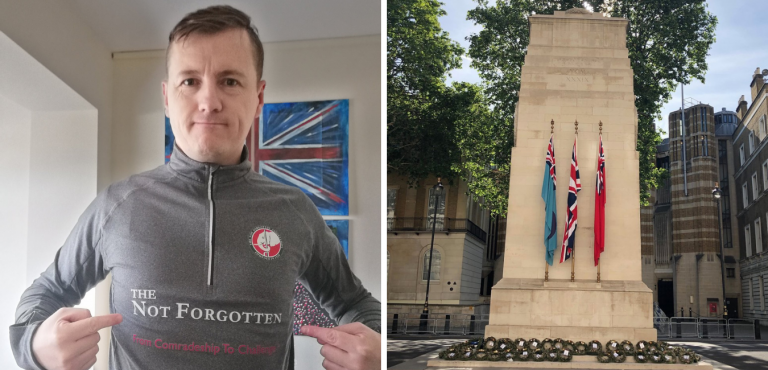Falklands artwork presented to The Not Forgotten by HMS Argonaut Association
This summer The Not Forgotten gained a new piece of artwork for our office – and it’s one with a very moving story behind it.
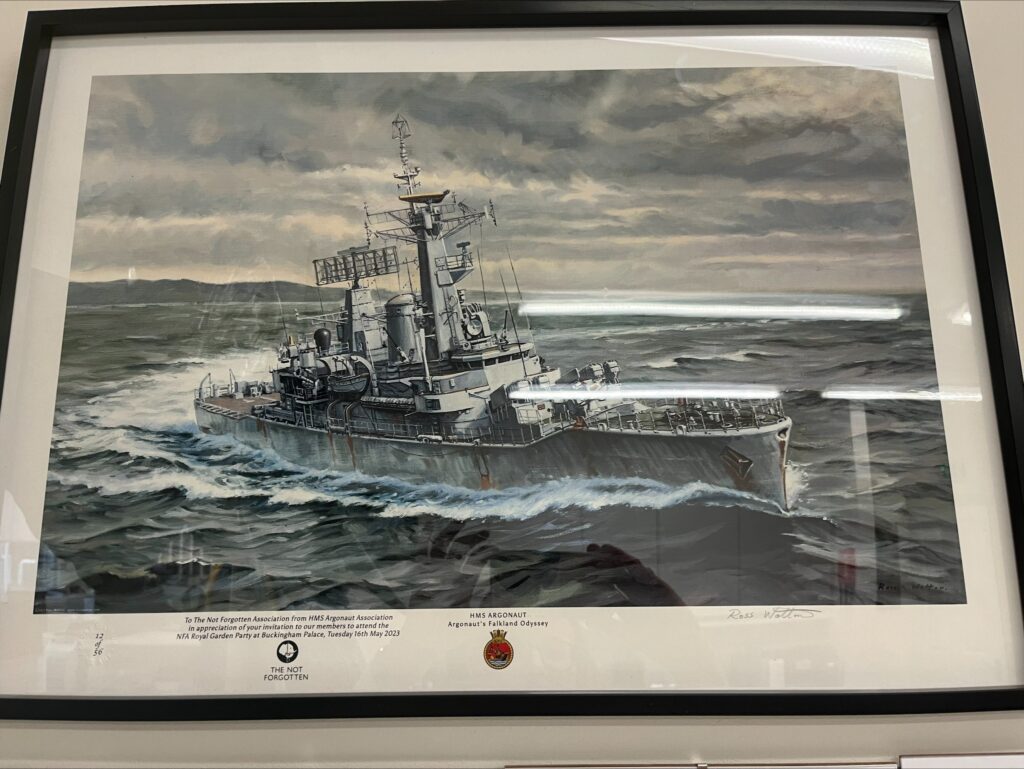
The painting (above) of HMS Argonaut making her way home after sustaining severe damage during the Falklands conflict was painted by Navy veteran Ross Watton and gifted to The Not Forgotten by the HMS Argonaut Association as a thank you for inviting some of their members to The Not Forgotten Garden Party at Buckingham Palace in May 2023.
Alongside the painting hangs a plaque dedicated to The Not Forgotten in gratitude for the assistance we gave in spreading the ashes of the parents of Able Seaman Iain Boldy at the spot where their son was killed in action aboard HMS Argonaut during the Falklands War.
Adrian Fisher from the Association came to present the beautiful painting and plaque to us in July – pictured below presenting it to Steve Bates from the TNF team.
Adrian and one of our beneficiaries Paddy Gallagher, who also served aboard HMS Argonaut, gave us the full moving story behind HMS Argonaut and what she experienced.
[Read the full account below…]
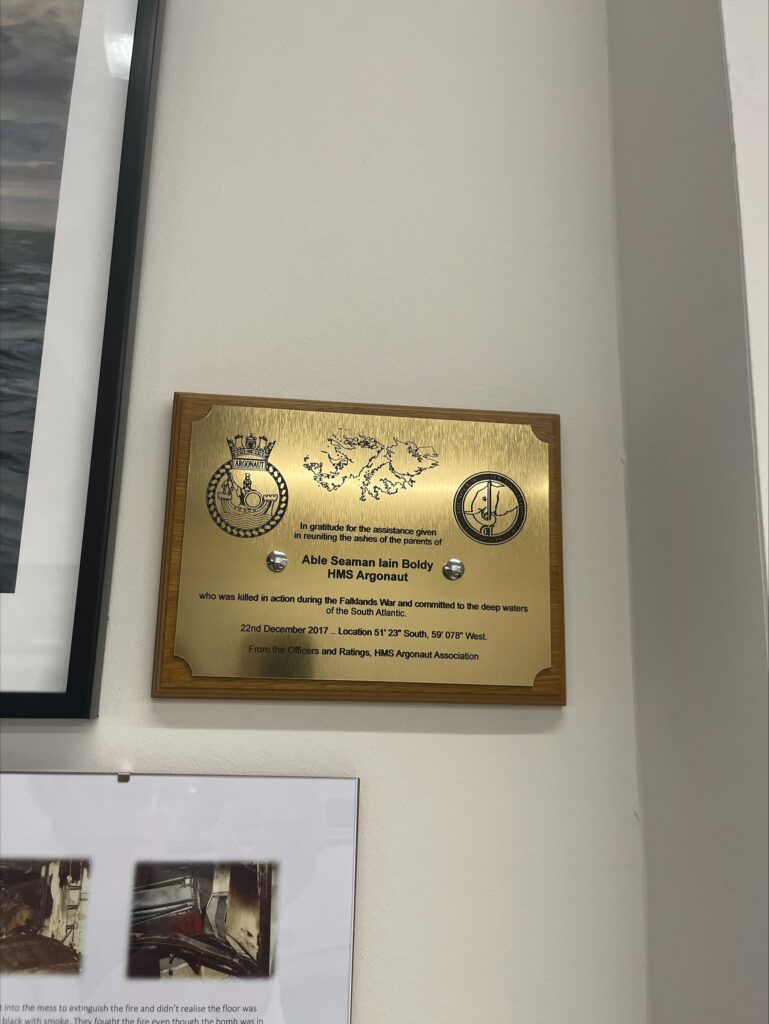
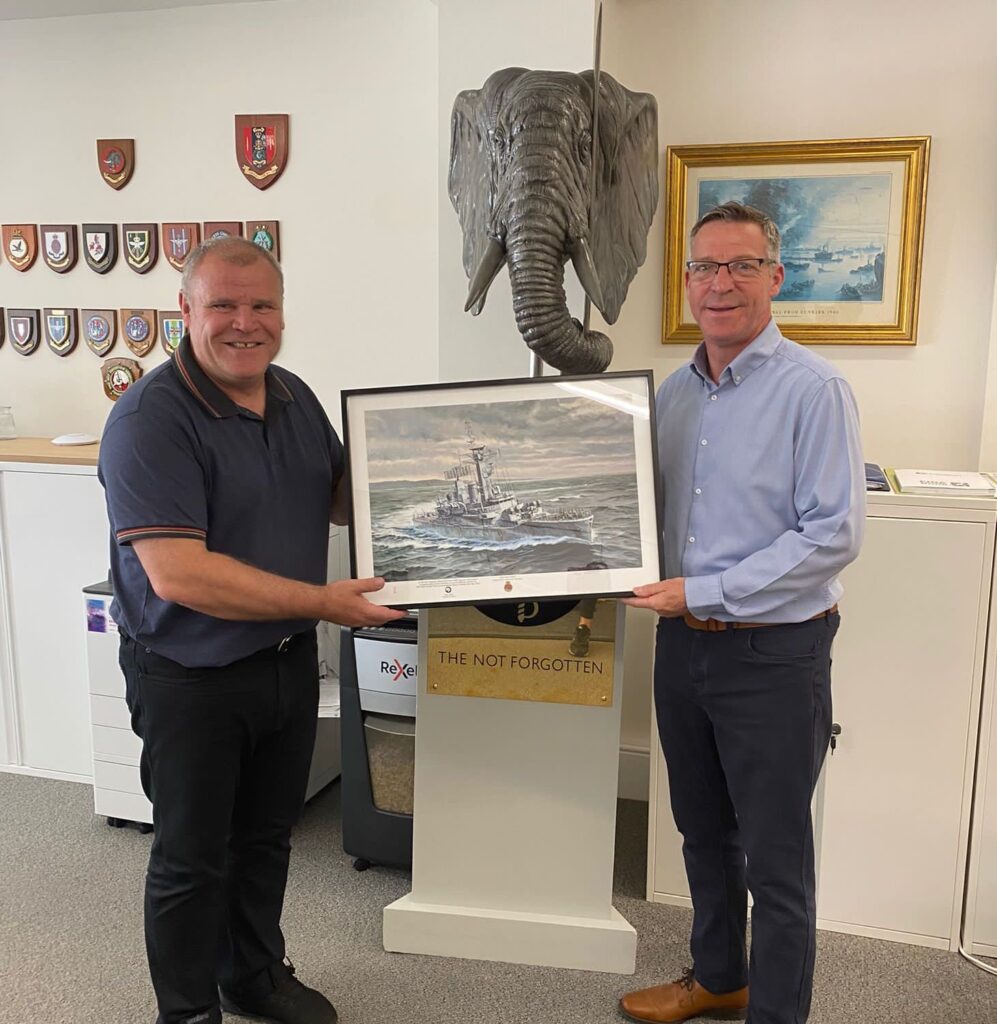
The following is extracted from the book, One Hundred Days: The Memoirs of The Falklands Battle Group Commander, by Admiral Sandy Woodward:
“21 May 1982: Then it began. An Argentinian light attack two-seater jet aircraft, the Italian built Naval Macchi 339, flying at wave-top height along the northern coast, swung suddenly into the narrow entrance to Falkland Sound, going as fast as he could. The first ship he saw was Kit Layman’s Argonaut and he fired all eight of his five inch rockets at the frigate, coming on in low and raking the decks with 30mm cannon shells. One rocket hit the Seacat missile deck area and injured three men – one of whom lost an eye; another, the Master-at-Arms, took a piece of shrapnel one inch above his heart.
The attack had been so swift and sudden that the raider was making his escape away to the south-east before any kind of hardware could be aimed at him. As it was, they had a shot at him with a Blowpipe missile from the deck of Canberra; Intrepid launched a Seacat missile and David Pentreath opened up with 4.5 inch guns of Plymouth. But the Macchi got away doubtless to stagger his High Command with the tale of what he had just seen spread out below him in Carlos Water…
Back in Carlos Water another hour went by before the Argentinians sent in their most lethal and sustained air raid of the day. It would last for just over half an hour and it did great damage. The opening assault was made by six Skyhawks flying extremely low along the north coast, out of sight of all our radars. As swiftly as any of the opening attacks, they came through the narrows at more than five hundred knots. There they found Kit Layman’s Argonaut, from which the crew was desperately trying to evacuate their wounded by helicopter over to Canberra. At the last moment the Argonauts saw them and opened fire with everything they had, but they had no hope whatsoever of stopping all six. Five made it through, dropping a total of ten thousand-pounders, eight of which exploded in the water close to the embattled Leander Class frigate. The other two hit her, but mercifully failed to explode. The first one hit forward, going through a diesel fuel tank and coming to rest in a Seacat magazine, starting a fire and causing considerable structural damage. By the most extraordinary bit of luck, the escaping diesel fuel was cold enough to put the fire out without itself igniting and adding to the fire instead. The second bomb rammed through the bulkhead between the engine room and the boiler room, wrecking the steering mechanism and the reverse gearing.
Argonaut was perilously close to the rocks around Fanning Head and still going ahead with effectively no brakes and no steering. With remarkable presence of mind, Sub-Lieutenant Peter Morgan [D.S.C.] raced off the bridge, collecting a couple of ratings as he went, and managed to let go the anchor, which dragged the three-thousand-tonner to a halt, just short of the shoreline. Seconds later they lost all power, there was almost total devastation in certain parts of the ship and, with two men killed in the magazine, Argonaut’s war was almost over.”
The following is an extract from the Ships Log from the 21st May 1982, although it was much more eventful than what was able to be recorded at the time …

The holes in the ships side where the bombs entered. One midships and the other into the forward Seacat magazine, killing the two lads in there.
At anchor in San Carlos Bay, two unexploded 1000 lb bombs still onboard.


The Seacat missile magazine where one of the bombs came to rest, and the hole through the ship’s side.
Able Seaman Iain Boldy and Seaman Matthew Stuart were killed down here.

The Mess Deck above the magazine, which buckled as one of the missiles exploded.
The fire was put out by the cold diesel and sea water that came through from a ruptured fuel tank.
The magazine was flooded and it was days before we could get the lads out.


The firefighters went into the Mess to extinguish the fire and didn’t realise the floor was raised as it was pitch black with smoke ….
They fought the fire even though the bomb was still in the flooded compartment below them.


Iain Boldy.
Iain was 20 years old when he died; he had only got married in March.
Buried at sea – 51 23S 59 078W
Matthew Stuart.
Tragically, Argonaut was hit on Matthew’s 18th birthday.
Buried at sea – 51 23S 59 078W
We will remember them.

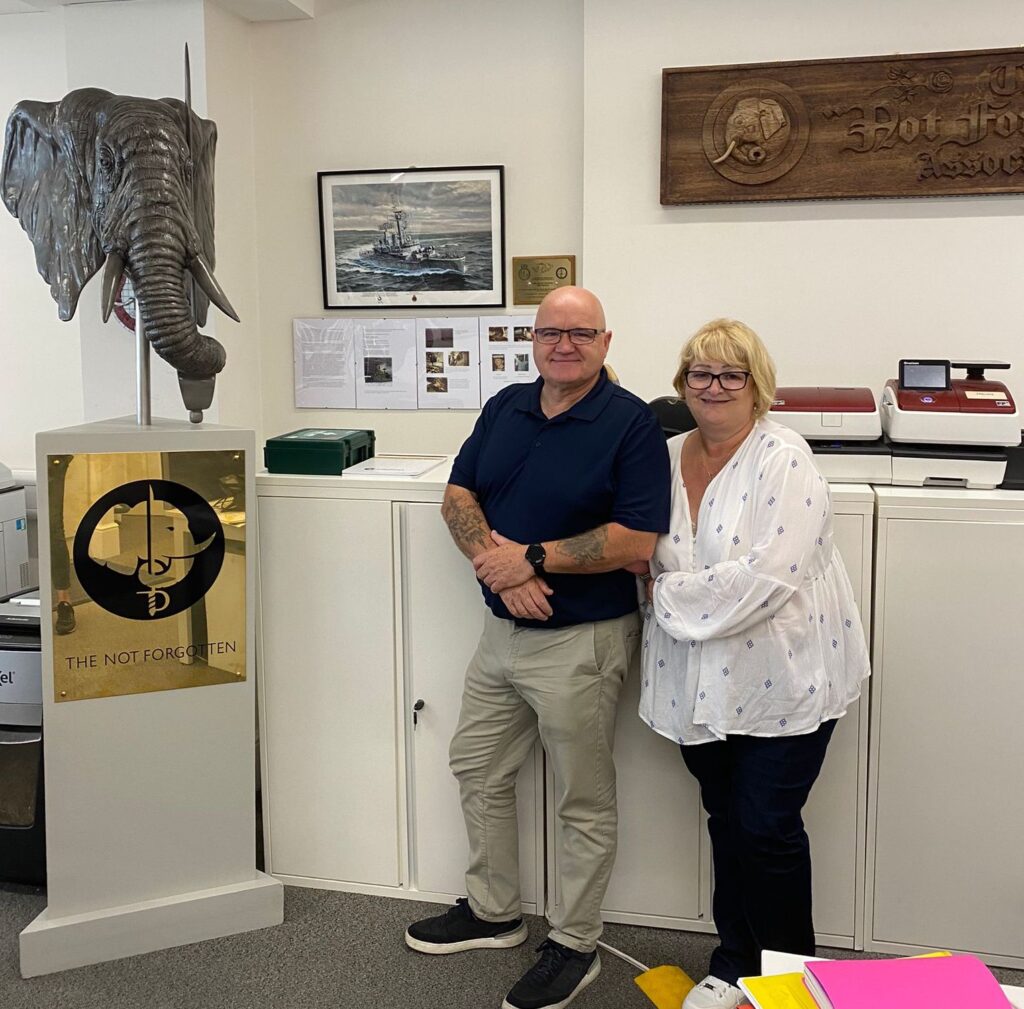
Argonaut veteran Paddy Gallagher with his wife Shirley, who came to see the painting, plaque and background story hung in pride of place in our office, next to our elephant statue.
Our deepest thanks to Adrian, Paddy, and the entire HMS Argonaut Association.




